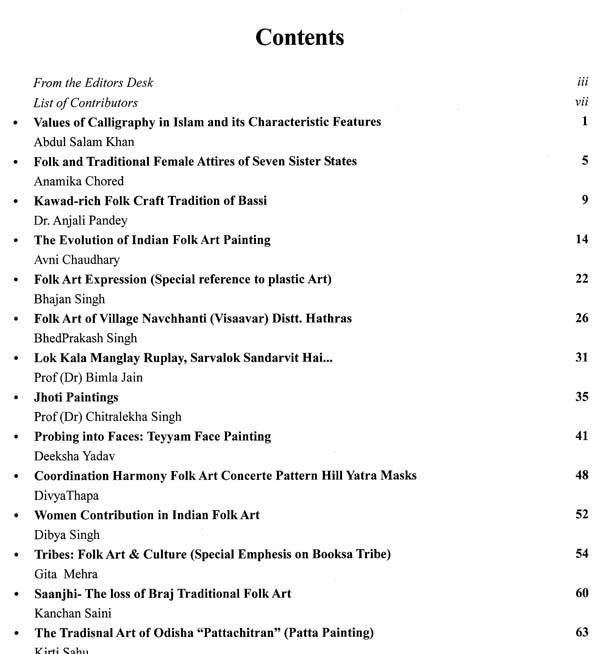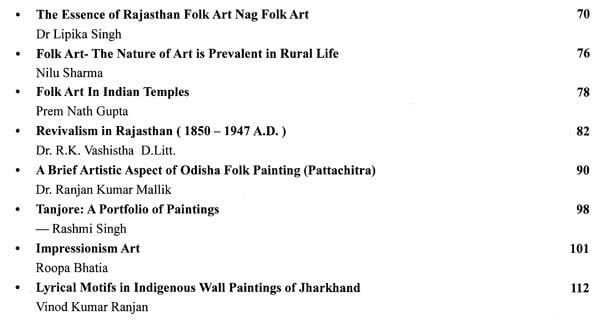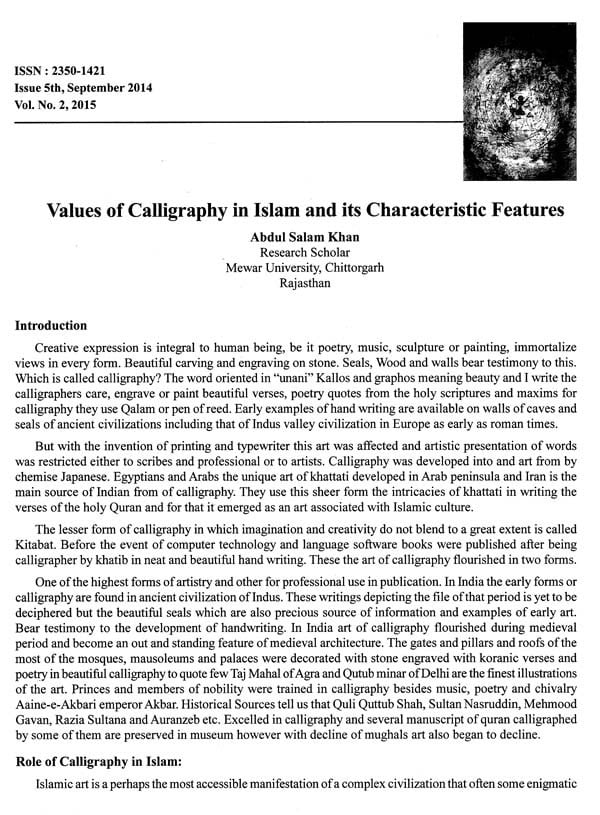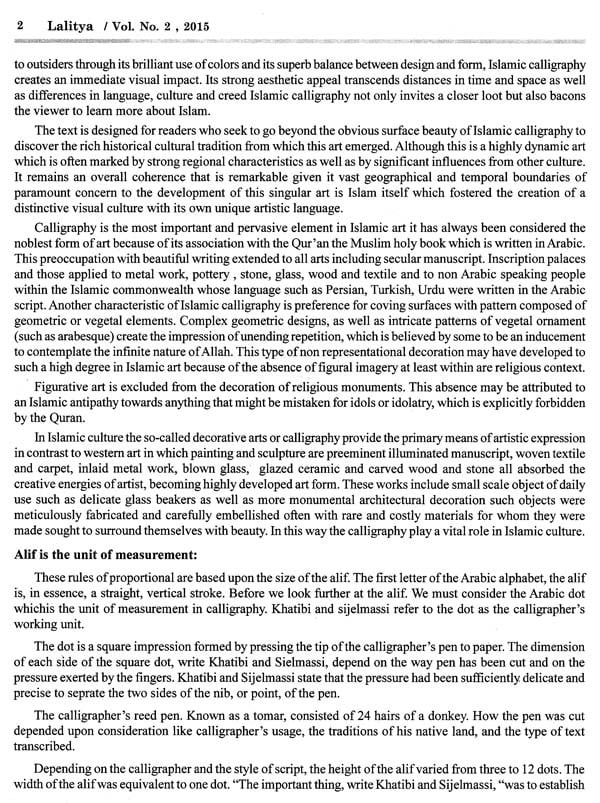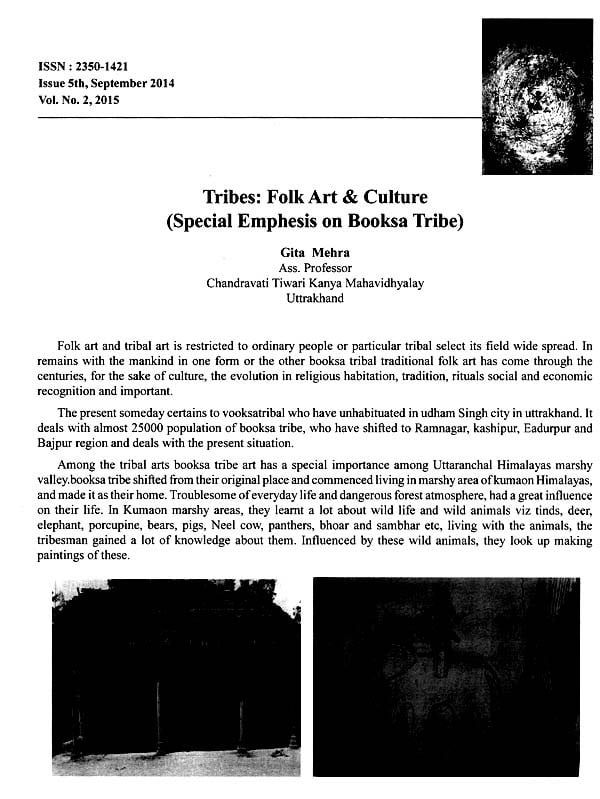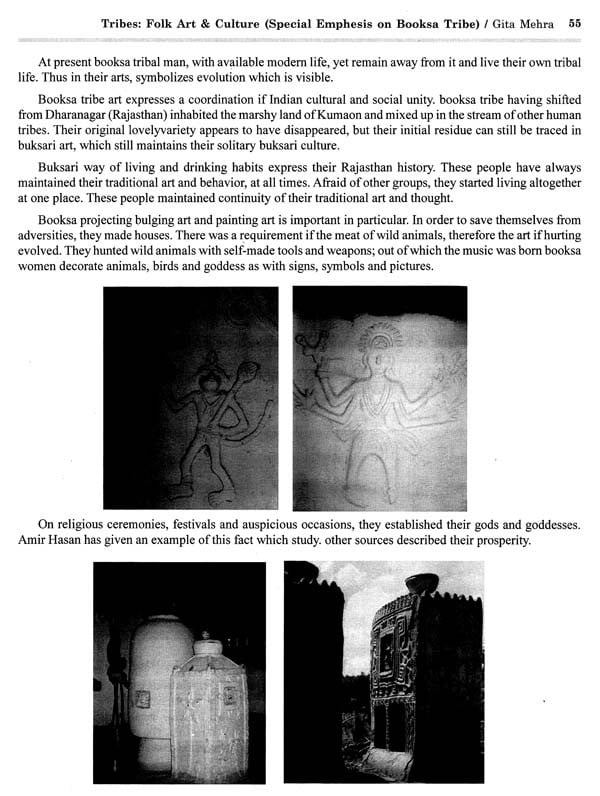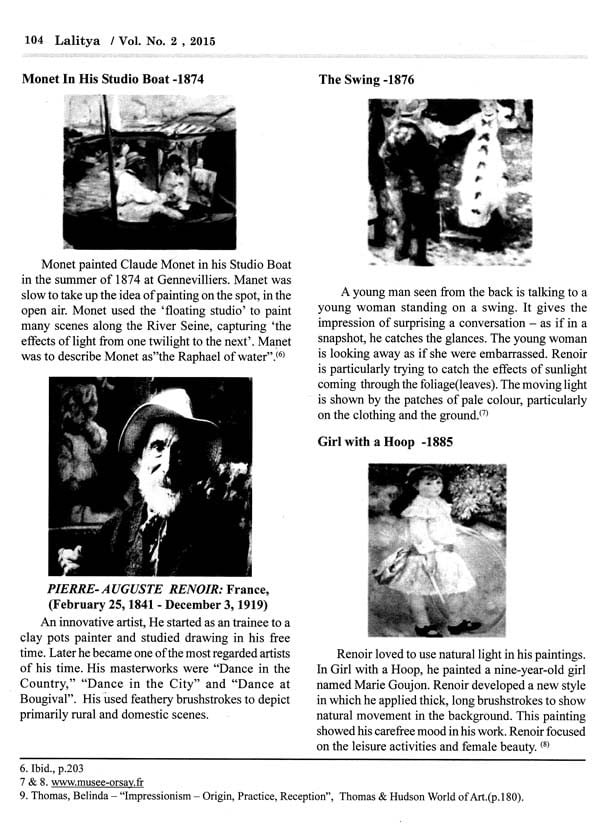
Laitya (Special Issue on Folk & Traditional Art) Vol: 2
Book Specification
| Item Code: | NBZ839 |
| Author: | Chitralekha Singh |
| Publisher: | Oxford Book Company, Rajasthan |
| Language: | English |
| Edition: | 2015 |
| Pages: | 130 (Throughout B/W Illustrations) |
| Cover: | PAPERBACK |
| Other Details | 11.00 X 8.50 inches |
| Weight | 390 gm |
Book Description
Dr. Chitralekha Singh, born 1945, recipient of Defence Secretary’s commendation medal and card as NCC officer (captain). Gandhi medal awardee, DLA award and Rupayan Achievers award 2013 International Who's Who or Professional & Business Women. Carolina (USA), (1998). Honorary member of Advisory Board of American Biographical institute of USA. (1998). (Dr.) Chitralekha Singh is the first Woman D.Litt (Painting) in the world. A M.A., PhD., D.Litt., she became Lecturer, Reader & Head, Department of Fine Arts, Agra College, Agra. She was awarded UGC Research Associateship minor and major project and short term project of ICHR. She is Founder-Director of Lalit Kala Sansthan, Dr B.R. Ambedkar University, Agra and Founder Dean., Institute or Visual Performing Art & Research Mangalayatan University, Aligarh, examiner of six universities, research guide of four universities and has privilege of 55 Ph.D. and 150 M.Phil awardees under her expert guidance.
Devoted to art, as an artist, she held many solo and group exhibitions, attended many seminars and Workshops. Her paintings are in the collection of Bangladesh, Holland, Germany, Nigeria, Rome, USA and Canada besides in India. Her 27 books have been published so far and more than 15 are under publication. She has visited Italy, Mauritius. China, United States, Canada, Pakistan, Nepal and Sri Lanka to convey, the message of peace 'Vashudhaiv Kutumbkam' (World is one Family) through her pen and brush. Now she is devoting her full time to promote art and culture at her own society ‘Chitralekha: The Village of Art’ at Agra & Mewar University, Chittorgarh. Nominee or ‘Art Prize’ Grand Rapids America September 2014, for painting ‘Divya Gyan’.
From the desk of the Editor in chief....
Folk painting reflects the gradual evaluation of primitive art & culture in authentic manner The traditional folk painting of world are millions even Indian folk art may be in thousands in number, soits very difficult to lay emphasis on any one part. The varied geographical and temporal prevalence and diversity of Folk Art make it difficult to describe as a whole in this journal which I will try in my next book The World Folk Art' My trial is to give a glance of folk & traditional art to the art world through this journal.
The dominant feature of traditional painting is a collective expression, a pictorial conception is continuous & goes on from generation to generation. A mother teaches the art to her daughter and they turn in pass to their daughters thus the tradition go on. It is maintained in the village by illiterate, untrained, hobbyist mainly women. Traditional painting prevalent among the folk is called Folk.
Painting, tribal art, primitive art, popular art, outsider art, traditional art, tramp art, working class art, blue collar art,. As one might expect, these terms can have multiple and even controversial connotations but are often used interchangeably with the term Folk Art'. This includes the ceremonial drawings & ornamentation on festive and auspicious occasion.
The tradition of folk art is pervasive. The tradition travel from one region to another region. The traditions influence each where in some from or the other. One finds a fundamental inner similarity in all these tradition of painting. In contrast to fine art, folk art is primarily utilitarian and decorative rather than purely aesthetics. Folk art is characterized in naive style in which traditional rules of proportion and perspective are not employed.
I am grateful to the contributors who contributed their article for this international research journal. My special thanks to Dr R K Vashishtha whose article added a rich aroma in the bunch of these flowers.
The aim of this research journal is to aware the art world to preserve the rich conception of the soul of art otherwise in this fusion era the piousness of folk & traditional art will vanish one day…. It is diminishing with modernity, industrialization or outside influence, the nature of Folk Art which is specific to its particular culture.
With all good wishes.
CHITRALEKHA
**Contents and Sample Pages**
